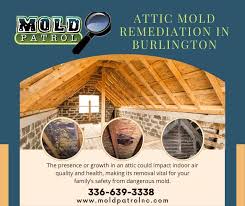Which Weather Mold Levels Are on Highest?
If you have mold allergies, you should know the time of year when the mold levels are at their highest. During humid summers when mold spores grow, they are at their peak. There are numerous ways you can limit the amount of exposure to allergens. For instance, keep your windows and doors closed.
Weather Mold Levels Are on Highest
Pollen peaks in late March
As winter transforms into spring, allergy sufferers might be eager to see a return to warmer weather. However, the transition in the seasons can also bring the onset of allergies. Some people find relief will not be felt until after the fall months. The seasons of pollen can differ from year to year and the timing of peak pollen seasons is contingent on the climate and weather patterns. For instance the cold or wet spring may delay the beginning of tree pollen season, and it could also coincide with grass pollen seasons.
The levels of pollen in trees generally peak in the latter part of March and continue through the middle of April. To provide a complete view of the seasons the data collection must be carried out during school hours for at least two weeks, however four weeks is the ideal. That way, you'll cover most of tree pollen season. The levels of pollen from ragweed tend to rise in the fall, particularly in the beginning of autumn and peak in mid-September. The levels slowly decrease after the peak. However, the levels of pollen could remain high into October.
The pollen of trees is the most well-known allergen. However grass pollen could be an issue. It is possible to reduce the symptoms by limiting your outdoor activity. Close your windows during the time of peak pollen season to stay away from exposure to airborne allergens. You should also watch out for insect bites and stings especially if you are allergic.
Mold spores peak in humid summers
The growth of mold can be more noticeable in humid areas. If you suffer with asthma or allergies this time of year can lead to more serious symptoms. Fortunately, there are a few simple ways to avoid exposing yourself to the high levels of indoor mold. First, you should avoid opening your windows at late at night. These conditions are ideal for mold growth.
Mold spores are released into the air by mold spores that are found in decaying plant matter. Mold spores are also released into the air by fungi that exist in the decomposing plant matter. Although many are familiar with mold in the fall seasons, it could also be an allergen in the indoor environment during the winter. It thrives in regions of warm, humid weather following the heavy rains.
Research shows that mold counts in Austin are especially high during the summer months when heat and summer rain are at their highest. The Allergy and Asthma Association found that the air contained 27262 spores in a cubic meter that fall into the category of "High. The levels are significantly higher than the ones Austin is seeing during this season.
Allergy symptoms may be affected by pollen count
To reduce the risk of the occurrence of more allergy-related symptoms To avoid an increase in allergy symptoms, stay indoors in the early morning or in the late afternoon, when pollen counts are at their highest. In addition, try to reduce your outdoor activities such as walking, during times that have high levels of pollen. Although pollen levels are highest in early morning and late afternoon, they gradually diminish towards the end of the day.
If you live in an area with high humidity and pollen counts that are high wear masks that block pollen to prevent exposure to these allergens. Also, avoid using a rake or hanging clothes outdoors. If you don't own masks, you can use an air conditioner to reduce the amount of pollen within your home.
The number of pollen grains in the air is used to determine the amount of pollen in the air. The pollen particles are made up of trees and grasses as well as weeds. People who are allergic to pollen will be affected by a higher pollen count. Pollen counts that are low could only affect seasonal allergy sufferers. The pollen count is determined by local pollen reporting stations. The quantity of pollen you are vital because it determines the degree of your allergy symptoms.
Take precautions to minimize your exposure to mold and pollen
It is important to take preventive measures if you are sensitive to pollen or mold. For instance, it is recommended to use a pollen mask while you are outside. You should also avoid doing activities like raking leaves outdoors or drying your clothes. Keep windows shut when you are able to.
Allergies can be caused by pollen and mold spores. These symptoms can last as long as a year. The spores, tiny fungi that reside in the soil and on plants are extremely uncommon. Similar to pollen, they produce tiny spores that are floating in the air. The number of mold spores that are found in outdoor areas rises during spring. They're at their highest during summer and are the lowest during winter.
The best way to minimize exposure to pollan and mold are the best way to avoid allergic reactions. If you reside in a dry or hot environment, you can try to limit your exposure. If you're indoors you can apply antihistamines and wear the mask of pollen.
|
Phone +13366393338
|
|
| Address: 4175 Burch Bridge Rd, Burlington, NC 27217, United States |

